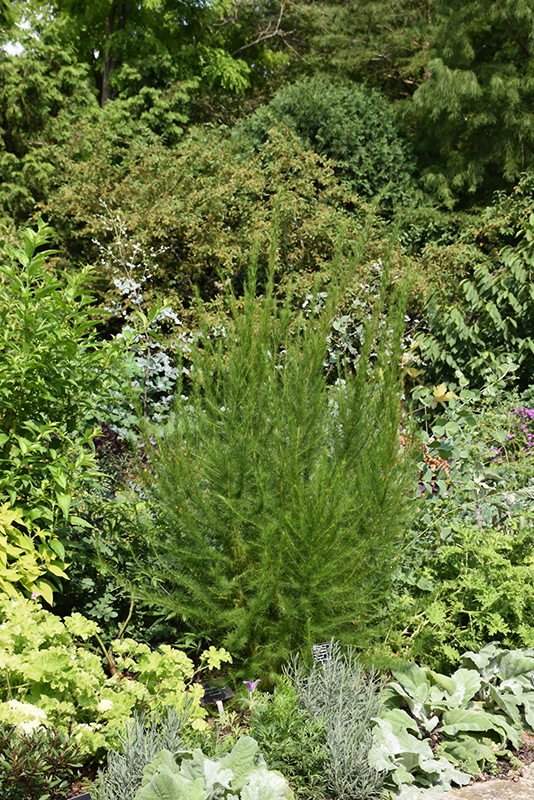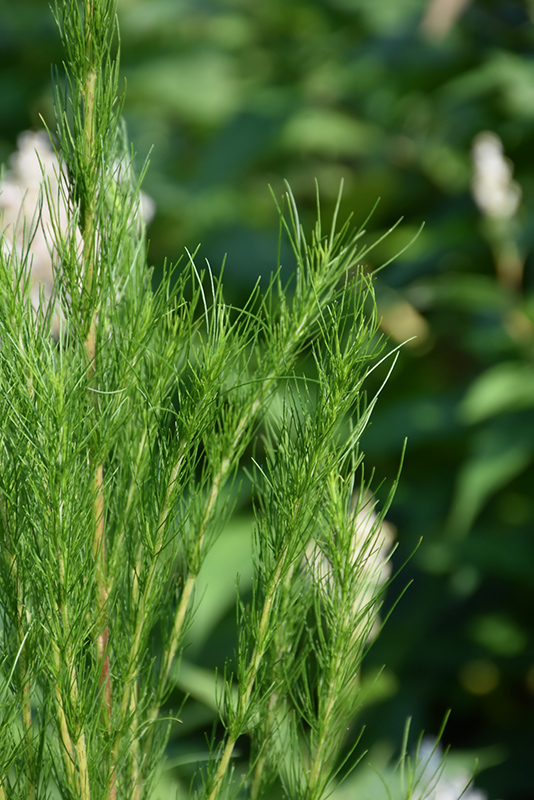Shonnard’s Nursery
Plant Finder Tool
Elegant Feather Dog Fennel
Eupatorium capillifolium 'Elegant Feather'
Height: 6 feet
Spacing: 30 inches
Sunlight:
![]()
![]()
Hardiness Zone: 4a
Other Names: Joe Pye Weed, Sneeze Weed
Description:
A majestic vertical plant with good height for borders; elegant, feathery fine foliage is bright green and rises up in columns, turning reddish in fall; white flowers are insignificant; this selection is sterile and non-invasive
Ornamental Features
Elegant Feather Dog Fennel is primarily valued in the landscape or garden for its pronouncedly upright and towering form. Its attractive deeply cut threadlike pinnately compound leaves are green in color. As an added bonus, the foliage turns a gorgeous brick red in the fall. The brick red stems can be quite attractive.
Landscape Attributes
Elegant Feather Dog Fennel is an herbaceous perennial with a rigidly upright and towering form. It brings an extremely fine and delicate texture to the garden composition and should be used to full effect.
This is a relatively low maintenance plant, and is best cleaned up in early spring before it resumes active growth for the season. It is a good choice for attracting butterflies to your yard, but is not particularly attractive to deer who tend to leave it alone in favor of tastier treats. It has no significant negative characteristics.
Elegant Feather Dog Fennel is recommended for the following landscape applications;
- Vertical Accent
- Mass Planting
- Hedges/Screening
- General Garden Use
Planting & Growing
Elegant Feather Dog Fennel will grow to be about 6 feet tall at maturity, with a spread of 3 feet. When grown in masses or used as a bedding plant, individual plants should be spaced approximately 30 inches apart. It tends to be leggy, with a typical clearance of 1 foot from the ground, and should be underplanted with lower-growing perennials. It grows at a medium rate, and under ideal conditions can be expected to live for approximately 15 years. As an herbaceous perennial, this plant will usually die back to the crown each winter, and will regrow from the base each spring. Be careful not to disturb the crown in late winter when it may not be readily seen!
This plant does best in full sun to partial shade. It prefers to grow in average to moist conditions, and shouldn't be allowed to dry out. It is not particular as to soil type or pH. It is somewhat tolerant of urban pollution. This is a selection of a native North American species. It can be propagated by division; however, as a cultivated variety, be aware that it may be subject to certain restrictions or prohibitions on propagation.


